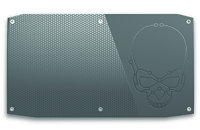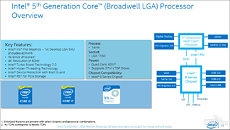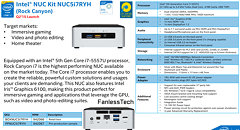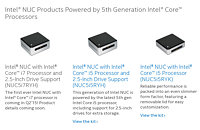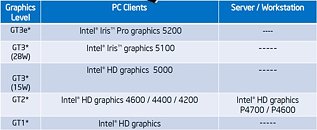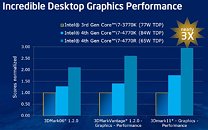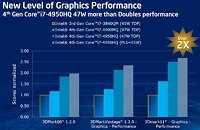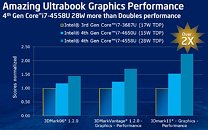
Intel Iris Plus Graphics G7 iGPU Beats AMD RX Vega 10: Benchmarks
Intel is taking big strides forward with its Gen11 integrated graphics architecture. Its performance-configured variant, the Intel Iris Plus Graphics G7, featured in the Core i7-1065G7 "Ice Lake" processor, is found to beat AMD Radeon RX Vega 10 iGPU, found in the Ryzen 7 2700U processor ("Raven Ridge"), by as much as 16 percent in 3DMark 11, a staggering 23 percent in 3DMark FireStrike 1080p. Notebook Check put the two iGPUs through these, and a few game tests to derive an initial verdict that Intel's iGPU has caught up with AMD's RX Vega 10. AMD has since updated its iGPU incrementally with the "Picasso" silicon, providing it with higher clock speeds and updated display and multimedia engines.
The machines tested here are the Lenovo Ideapad S540-14API for the AMD chip, and Lenovo Yoga C940-14IIL with the i7-1065G7. The Iris Plus G7 packs 64 Gen11 execution units, while the Radeon RX Vega 10 has 640 stream processors based on the "Vega" architecture. Over in the gaming performance, and we see the Intel iGPU 2 percent faster than the RX Vega 10 at Bioshock Infinite at 1080p, 12 percent slower at Dota 2 Reborn 1080p, and 8 percent faster at XPlane 11.11.
The machines tested here are the Lenovo Ideapad S540-14API for the AMD chip, and Lenovo Yoga C940-14IIL with the i7-1065G7. The Iris Plus G7 packs 64 Gen11 execution units, while the Radeon RX Vega 10 has 640 stream processors based on the "Vega" architecture. Over in the gaming performance, and we see the Intel iGPU 2 percent faster than the RX Vega 10 at Bioshock Infinite at 1080p, 12 percent slower at Dota 2 Reborn 1080p, and 8 percent faster at XPlane 11.11.




















